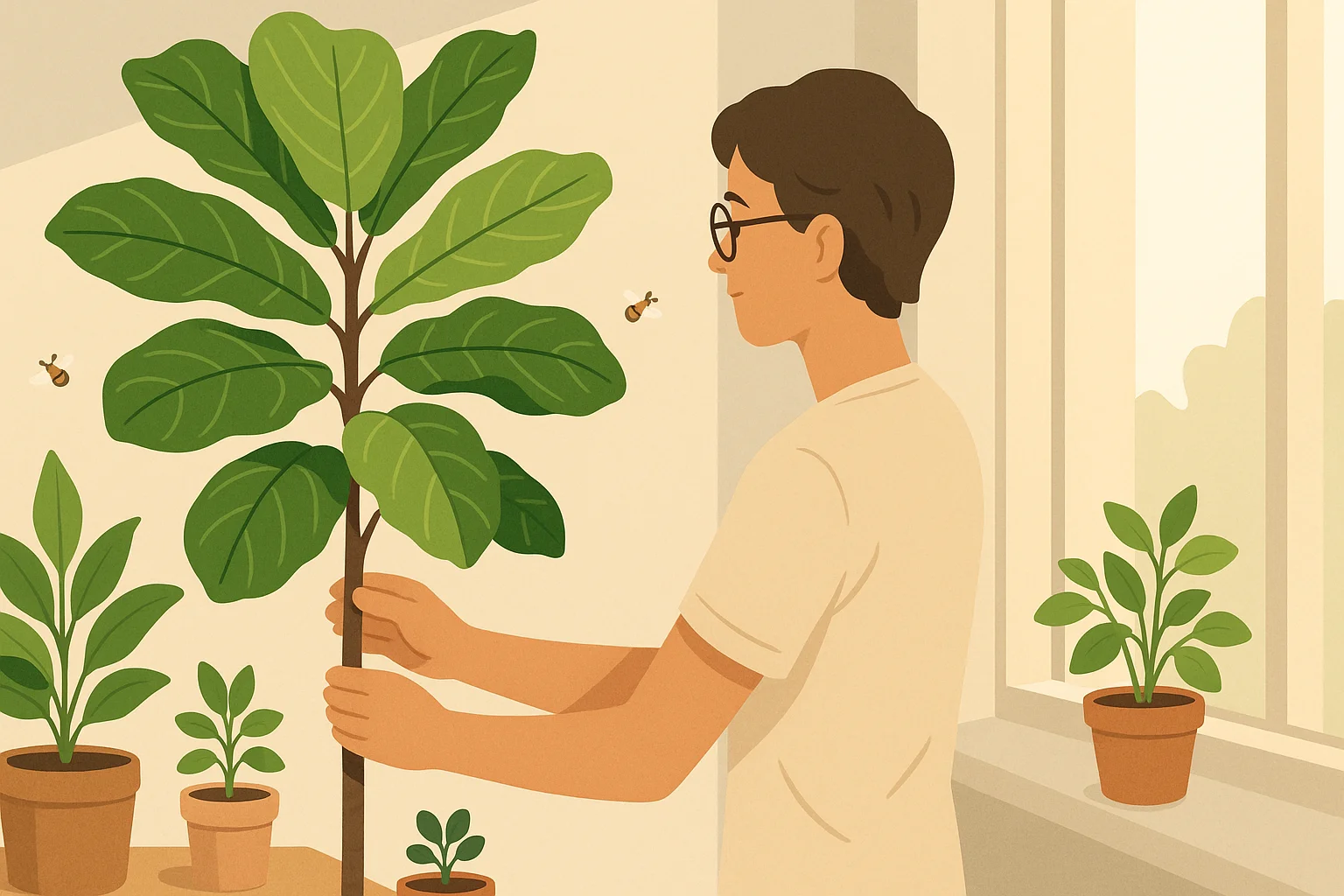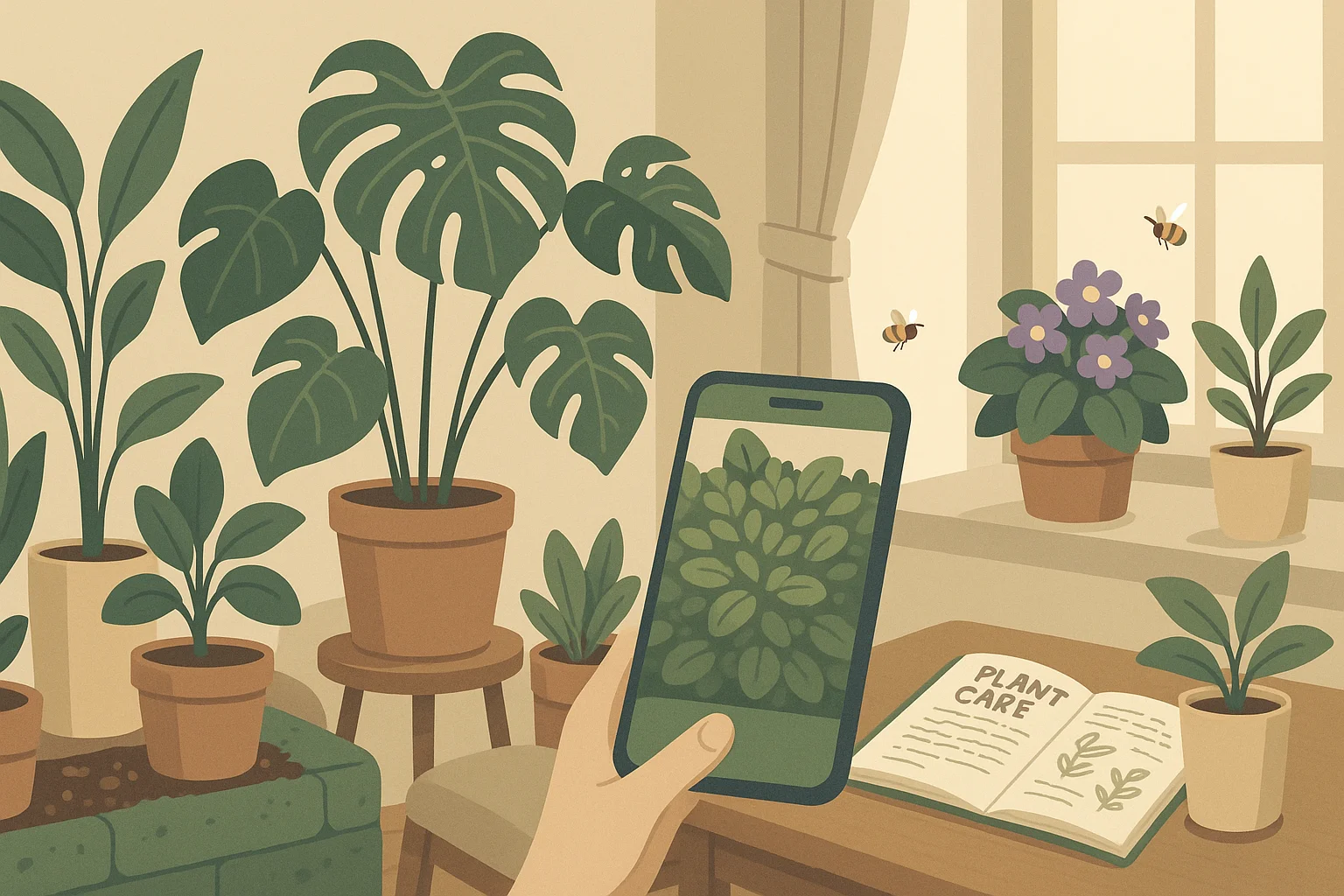Build Your Solid Plant Care Routine: Top Habits to Form
Thriving greenery doesn’t happen by accident—it’s the result of consistent care and thoughtful habits. From houseplants on windowsills to balcony gardens or backyard beds, every plant benefits when routines are structured and intentional.
By forming habits that combine daily attention, smart techniques, and digital support to identify plant from picture, anyone can create an environment where plants flourish year-round.

Consistent Observation and Scheduling
Observation is the cornerstone of plant care. Plants often “communicate” their needs through visible changes, and noticing them early can prevent small issues from escalating.
Daily or Weekly Check-Ins: Even five minutes a day can make a difference. Look for yellowing leaves, drooping stems, or soil that feels unusually dry.
Morning Reviews: Checking plants in the morning allows you to spot overnight changes and sets a positive tone for your day.
Tracking Tools: Use a simple notebook or a digital calendar to log watering days, fertilizing cycles, and pruning sessions. With a growing plant collection, reminders ensure that no plant is overlooked.
Observation Habit | Benefit | Frequency Recommendation |
Quick visual inspection | Detects early stress or pests | Daily or every other day |
Soil touch test | Prevents over- or under-watering | Every watering session |
Growth and bloom logging | Tracks seasonal progress and cycles | Weekly or monthly |
By building consistency into your schedule, you make plant care part of your lifestyle instead of an irregular task. Over time, this consistency becomes second nature and leads to healthier, stronger plants.
Smart Watering and Feeding Habits
Watering is where many beginners struggle, but it doesn’t need to be complicated. Plants thrive when hydration is balanced with proper feeding during growth periods.
Check Before Watering: Stick a finger an inch into the soil; if it’s dry, water. If not, wait another day.
Use Drainage-Friendly Pots: This prevents waterlogging, which is one of the most common causes of root rot.
Seasonal Fertilizing: Most plants only need extra nutrients during spring and summer when growth is active. Overfeeding during dormant months can harm them.
Feeding Quick Guide
Plant Type | Fertilizer Needs | Season to Apply |
Flowering Plants | Balanced liquid fertilizer | Spring–Summer |
Leafy Green Plants | Nitrogen-rich supplement | Spring–Early Autumn |
Succulents & Cacti | Diluted, low-frequency feeding | Summer only |
By pairing careful watering with timely feeding, you ensure plants receive exactly what they need to grow, bloom, and remain healthy.
Pruning, Rotating, and Dusting
Healthy plants aren’t just about water and nutrients—they also need maintenance to stay vibrant. Three simple yet powerful habits can make all the difference: pruning, rotating, and dusting.
Pruning for Growth: Removing dead or yellowing leaves, cutting back leggy stems, and trimming damaged foliage encourages new, healthier growth. For flowering plants, deadheading (removing faded blooms) promotes continuous blooming.
Rotating for Balance: Plants naturally lean toward the light source. By rotating pots every week or two, you ensure even exposure, preventing lopsided growth and weak stems.
Dusting for Photosynthesis: A thin layer of dust on leaves blocks light absorption and clogs pores. Wiping leaves gently with a damp cloth—or giving them a quick shower—restores their ability to breathe and photosynthesize effectively.
Habit | Why It Matters | Frequency |
Pruning | Stimulates fresh growth, prevents disease spread | Monthly or as needed |
Rotating | Ensures balanced, sturdy growth | Every 1–2 weeks |
Dusting | Improves photosynthesis and air quality | Monthly or bi-monthly |
Together, these actions keep plants looking their best and functioning at their peak, turning your space into a truly thriving green environment.

Repotting and Environmental Adjustments
As plants grow, their needs evolve. Repotting and adapting their environment ensures they continue to thrive long-term.
When to Repot: Signs like roots growing out of drainage holes, water sitting on the soil surface, or slowed growth often indicate a plant is outgrowing its pot. Repotting every 1–2 years refreshes soil nutrients and gives roots room to expand.
Choosing the Right Pot: Select a pot that’s 1–2 inches larger in diameter than the old one, with proper drainage holes. Avoid “over-potting,” which can lead to soggy soil.
Seasonal Shifts: Plants react to changes in light and temperature. In winter, move them away from cold drafts or heaters; in summer, shield them from scorching midday sun.
Humidity Boosts: Many tropical plants benefit from higher humidity. Grouping plants together, using trays with water and pebbles, or running a humidifier helps mimic their natural habitat.
Adjustment | Practical Benefit |
Repotting | Provides fresh nutrients, prevents root binding |
Pot Selection | Reduces risk of water stress |
Seasonal Placement | Protects from extreme conditions |
Humidity Increase | Supports lush, tropical plant growth |
By tailoring their environment and refreshing their home base, you set your plants up for continued vitality and resilience.
Harnessing Digital Tools: AI Plant Finder
Consistency in plant care is easier with smart technology. The AI Plant Finder app is one of the most reliable companions for gardeners at any level, blending education with practical assistance.
Instant Plant Identification: Snap a photo and access details from a 300,000+ species database, helping you catalog both common and exotic plants.
Disease Diagnosis: Upload images of sick plants to receive tailored causes, treatments, and prevention tips.
Expert Care Tips: Learn specific pruning, fertilizing, and watering strategies through an integrated AI botanist.
My Garden Tool: Organize your collection, track bloom cycles, and set reminders for watering, pruning, and repotting.
Water Calculator & Light Meter: Eliminate guesswork by measuring hydration needs and optimal placement for sunlight.
Available on Android and iOS, with a freemium structure, this app supports both beginners and advanced growers. It ensures your daily habits are supported by professional-level insights.
Building Habits That Last
Forming a solid routine comes down to small, repeatable actions supported by mindful observation and modern tools. By combining:
Consistent scheduling (watering, fertilizing, pruning)
Environmental awareness (light, humidity, seasonal shifts)
Supportive digital aids (AI Plant Finder for quick guidance)
